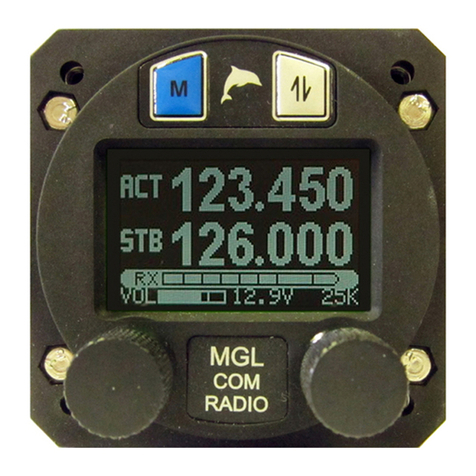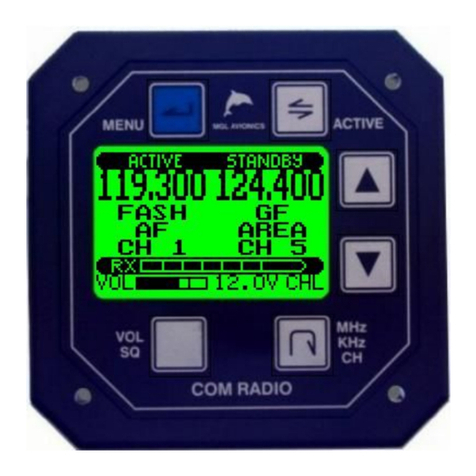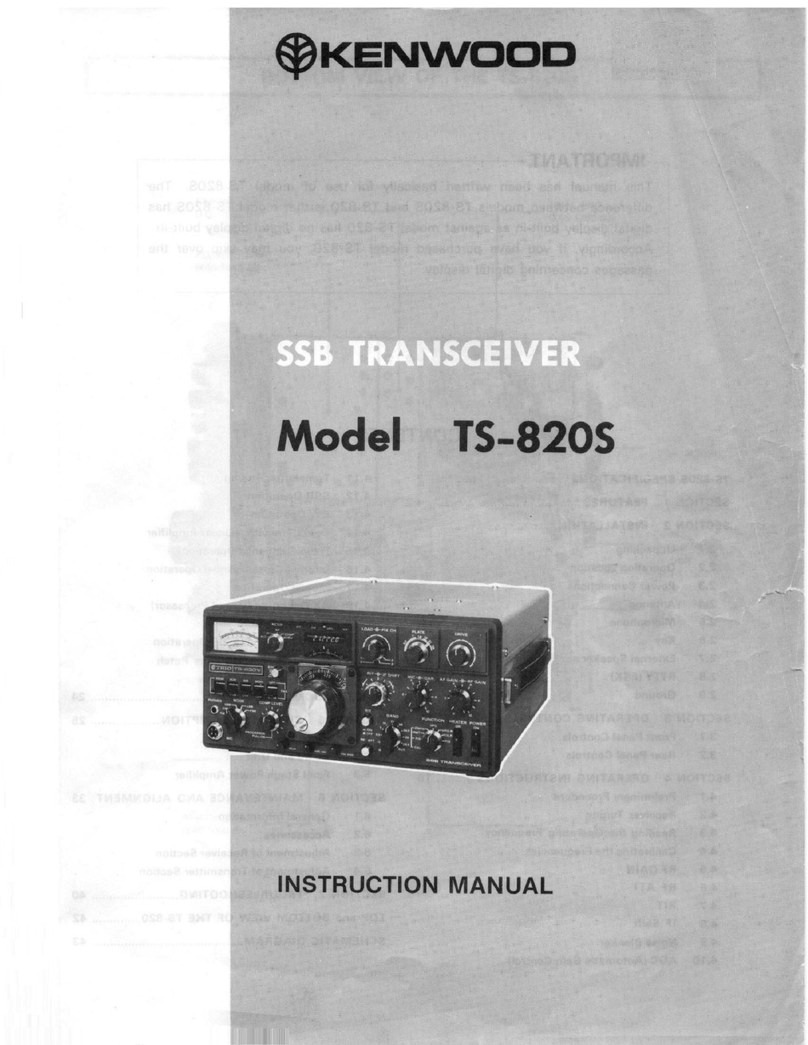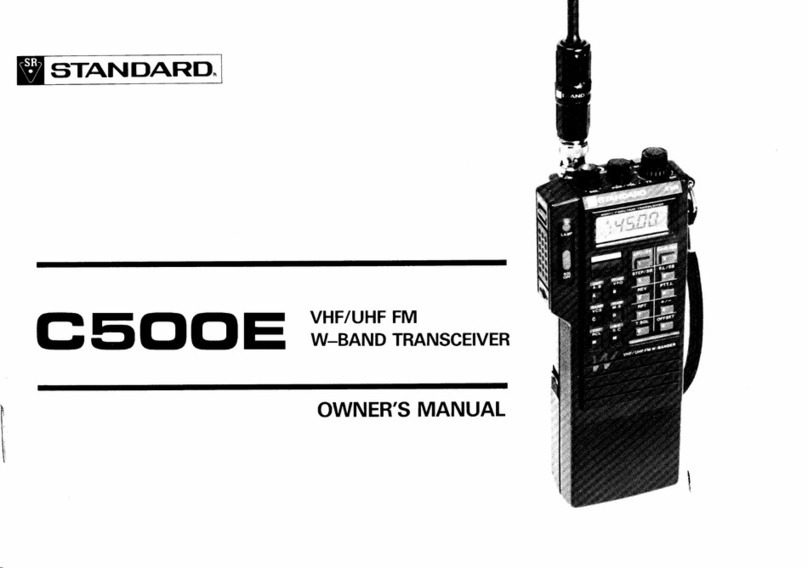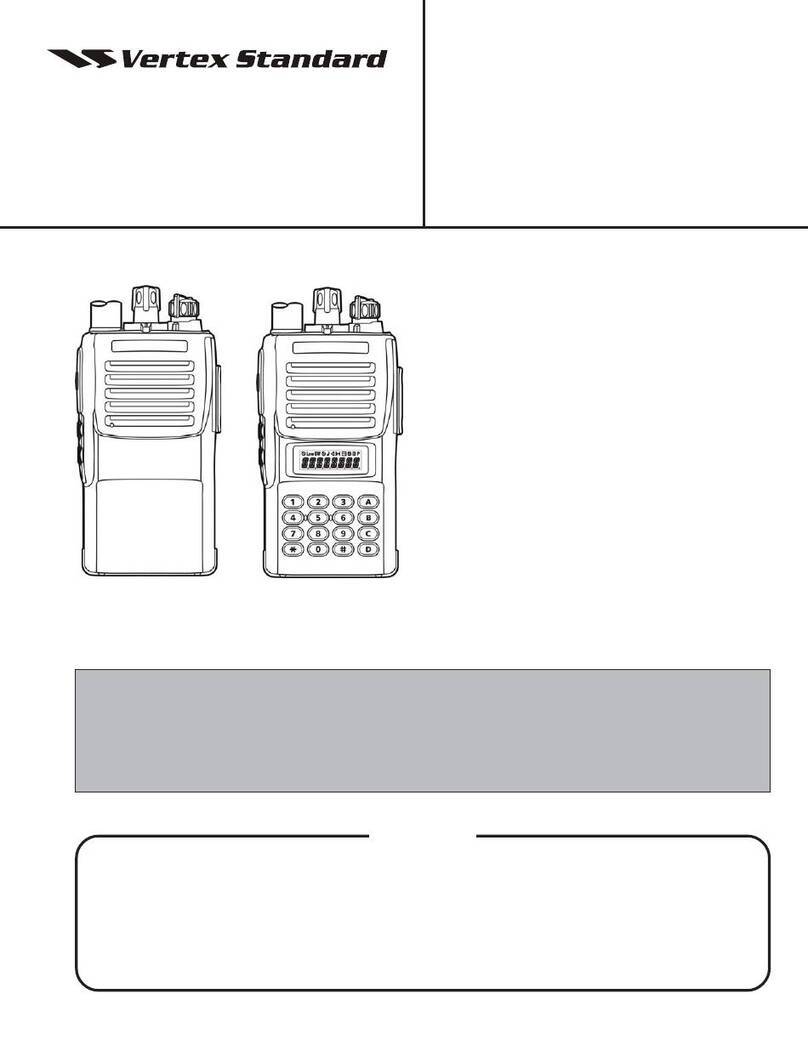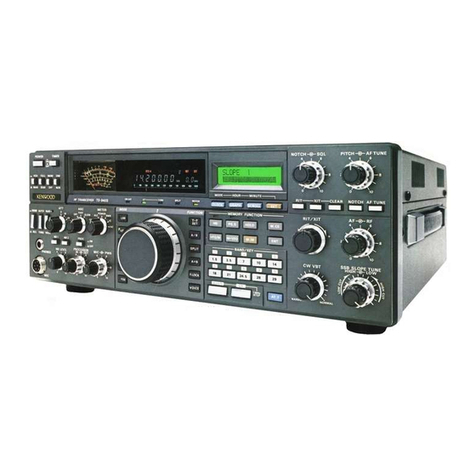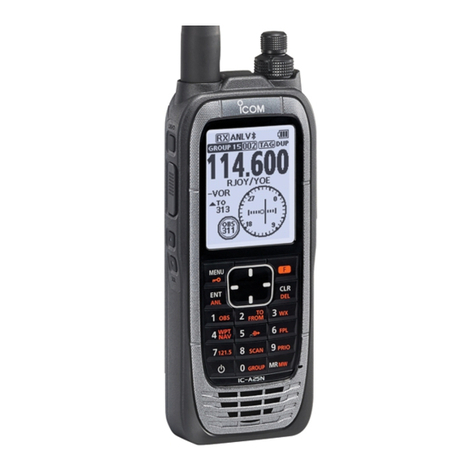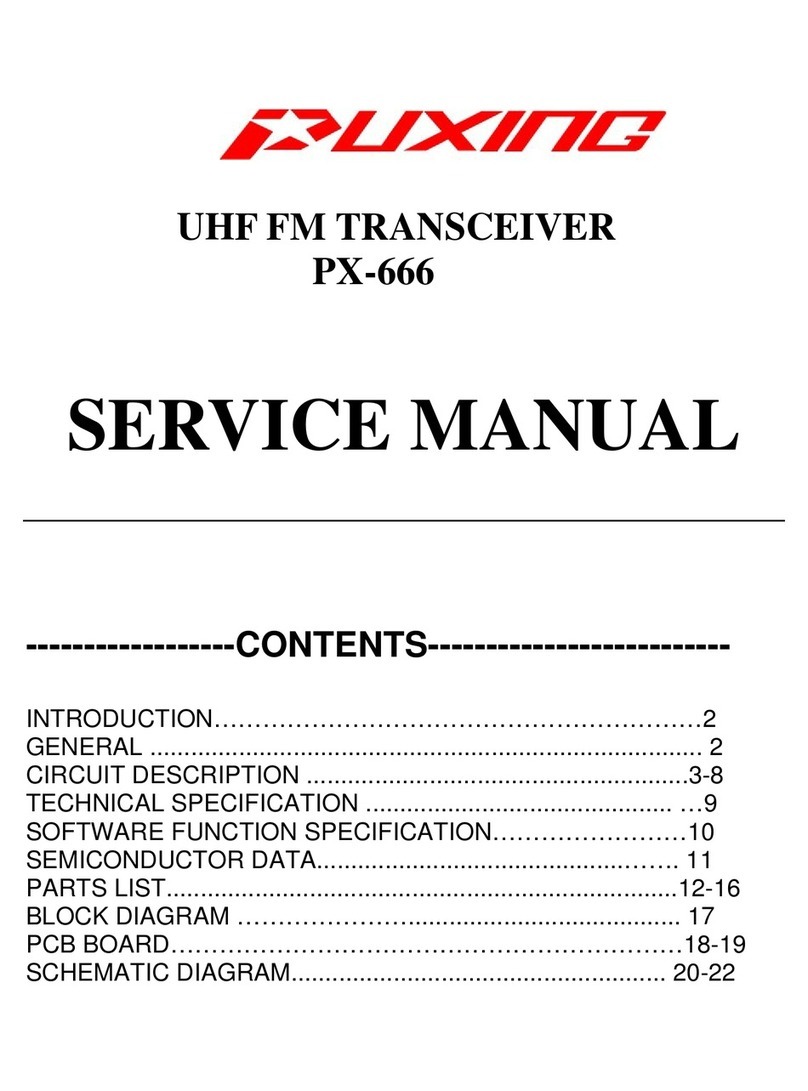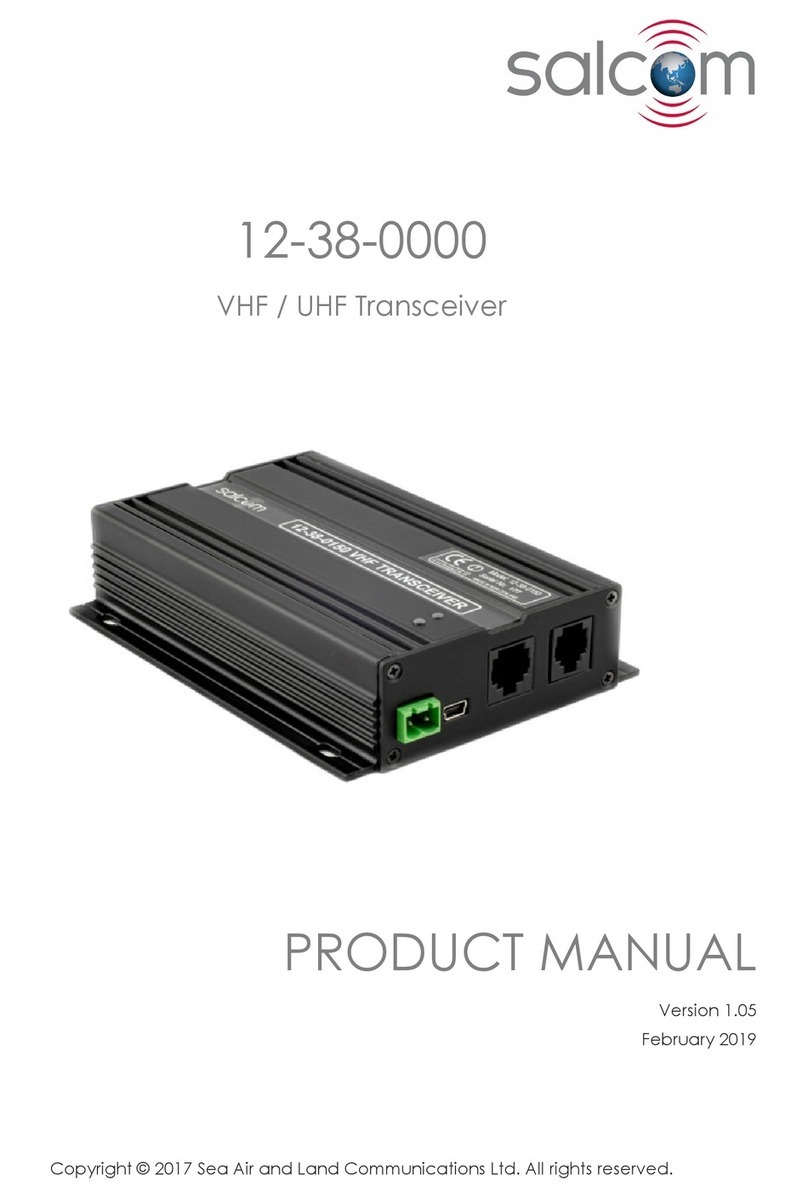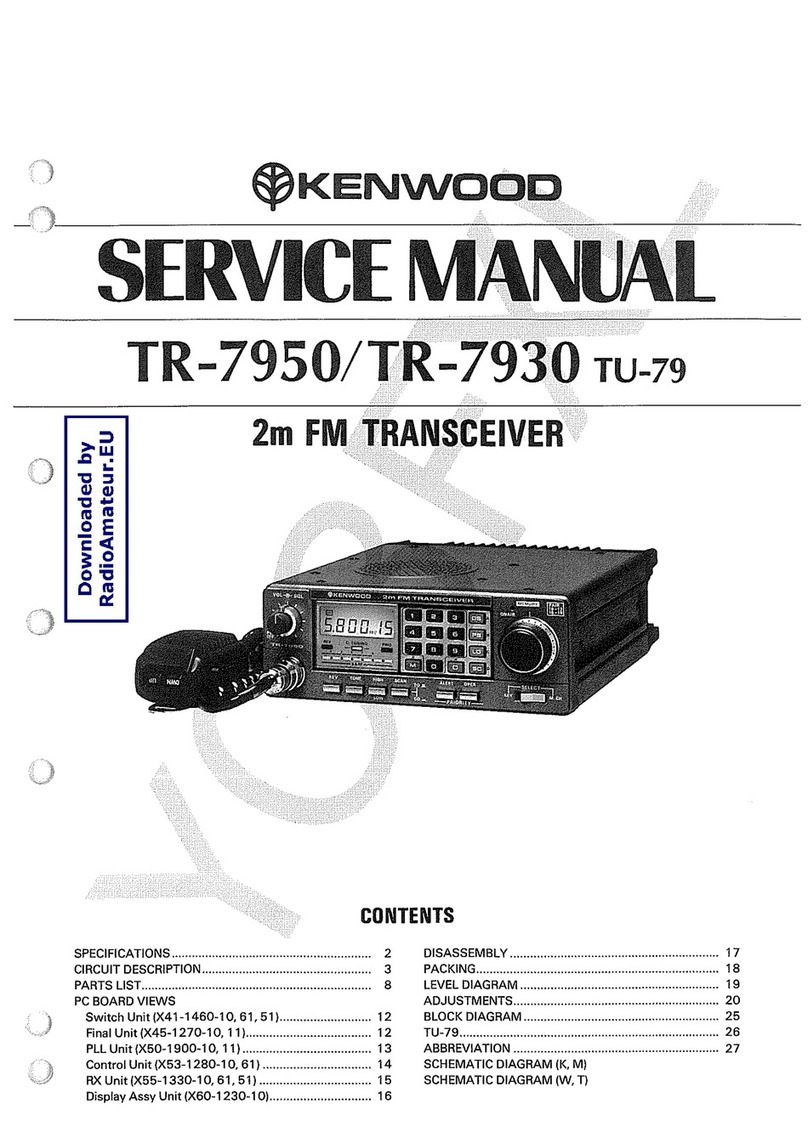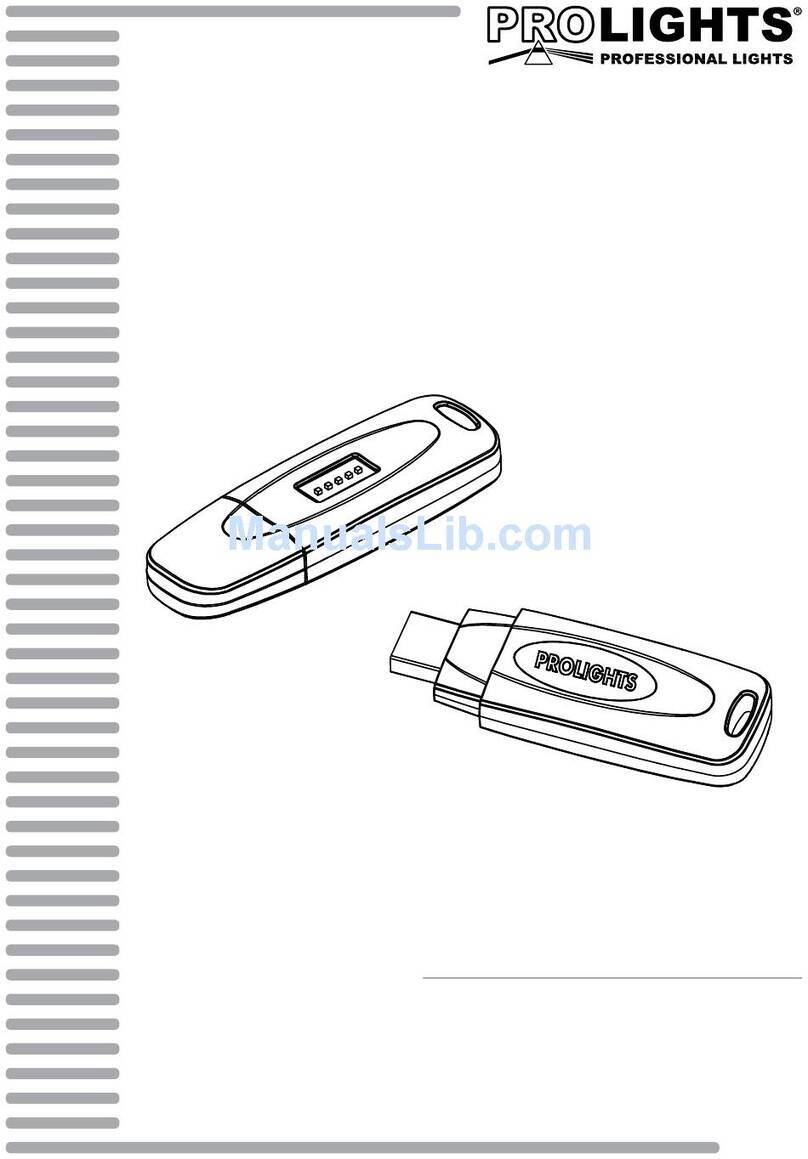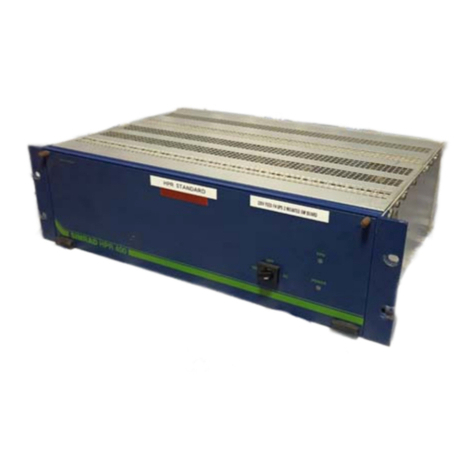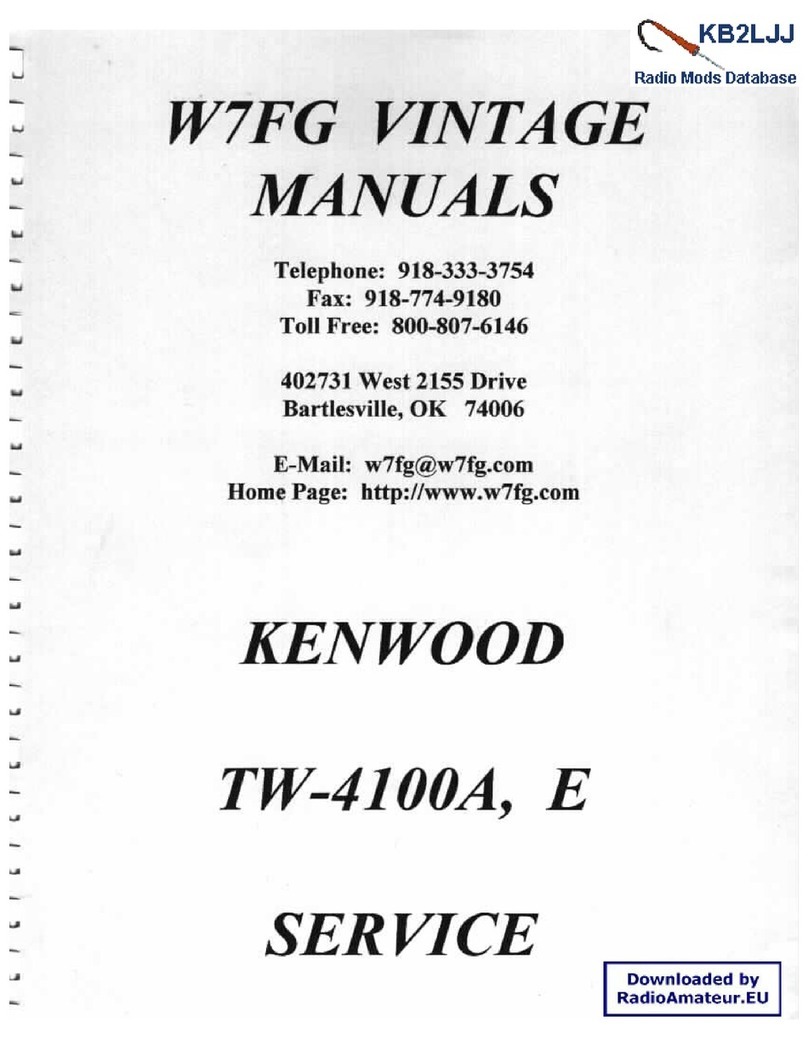MGL Avionics V16 Operating manual

MGL Avionics
V16 Aviation band transceiver
User and Installation manual

Table of Contents
RF Exposure...............................................................................................................................4
FCC Statement............................................................................................................................4
Industry Canada approval notes.................................................................................................4
General........................................................................................................................................4
Document history........................................................................................................................4
Description..................................................................................................................................4
The Transmitter.......................................................................................................................5
The Receiver ..........................................................................................................................5
The intercom system...............................................................................................................
RX playback feature................................................................................................................
Power supply..........................................................................................................................7
Antenna...................................................................................................................................7
Digital control interfaces.........................................................................................................7
Applicable standards...................................................................................................................7
Specification table.......................................................................................................................8
General specifications............................................................................................................8
Audio input specifications.......................................................................................................9
Audio output specifications.....................................................................................................9
Audio, RX and TX filters........................................................................................................10
Transmitter self protection.........................................................................................................10
Transmitter low power option....................................................................................................11
Environmental qualification matrix............................................................................................11
V1 Connector pinout...............................................................................................................13
Typical connection diagrams.....................................................................................................14
Audio wiring..........................................................................................................................14
Audio signal wiring advice....................................................................................................15
Control heads and options........................................................................................................1
Pinout for 3.18” Razor and 2.25” Vega transceiver control head.........................................1
V1 with one or more control heads.....................................................................................17
V1 with a MGL Avionics EFIS system.................................................................................17
V1 plus N1 Navigation receiver........................................................................................17
V1 plus N1 with one or more control heads.....................................................................17
Electrical state interfaces..........................................................................................................18
PTT inputs.............................................................................................................................18
Intercom Switch/Playback switch..........................................................................................18
TX Interlock...........................................................................................................................18
RF feedback – cause and elimination.......................................................................................18
TX signal delay.....................................................................................................................19
RS232 and CAN bus communication protocols........................................................................19
Setup menu...............................................................................................................................19
Menu items...........................................................................................................................20
CAN bus addressing.................................................................................................................21
VSWR Antenna checks and tuning...........................................................................................22
What is a good antenna match ?..........................................................................................22
Reasons for a bad VSWR:....................................................................................................23
Tuning antennas...................................................................................................................23

Adjusting microphone levels.................................................................................................23
Mechanical dimensions........................................................................................................25
Materials ..............................................................................................................................25

RF E posure
This Transceiver generates RF electromagnetic energy while transmitting. For
compliance with RF exposure limits, the antenna gain should not exceed
0dBd (dipole antenna) and any persons should maintain a distance of at least
1m/3ft from the antenna during operation.
Do not operate this Transceiver in an explosive atmosphere.
FCC Statement
THIS DEVICE COMPLIES WITH PART 15 OF THE FCC RULES. OPERATION IS SUBJECT
TO THE FOLLOWING TWO CONDITIONS: (1) THIS DEVICE MAY NOT CAUSE HARMFUL
INTERFERENCE, AND (2) THIS DEVICE MUST ACCEPT ANY INTERFERENCE
RECEIVED, INCLUDING INTERFERENCE THAT MAY CAUSE UNDESIRED OPERATION.
FCC ID: 2ANEFV16
NOTE: THE GRANTEE IS NOT RESPONSIBLE FOR ANY CHANGES OR
MODIFICATIONS NOT EXPRESSLY APPROVED BY THE PARTY RESPONSIBLE FOR
COMPLIANCE. SUCH MODIFICATIONS COULD VOID THE USER’S AUTHORITY TO
OPERATE THE EQUIPMENT.
Industry Canada approval notes
If this device is intended to be operated on board an aircraft, the V1 transceiver shall only be
operated in accordance with Regulation by Reference RBR-1, Technical Requirements for the
Operation of Mobile Stations in the Aeronautical Service, as issued by the Minister of Industry.
General
This manual documents the installation and use of the V1 air band transceiver. Please note
that operation of the transceiver with respect to settings such as frequency, volume etc is
done by the connected control panel. User interface varies by type of connected system.
Please refer to documentation for the connected equipment for details.
This manual describes available settings through the connected equipment in a generic way
that is applicable to all types.
Document history
1 November 2017, first release.
11 January 2018, added information on TX power tolerance and modulation characteristics.
20 July 2018, added Industry Canada note, added instruction on how to adjust microphone
levels.
Description
The V1 airband transceiver is a split module consisting out of the transceiver body and
optional external control. External control can take the form of one or more panel mount

control heads and/or control by an EFIS system.
The Transmitter
The transmitter is designed to deliver a 10W un-modulated carrier into a 50 ohm matched
antenna load. Modulation is controlled fully digitally to achieve to 70% modulation index by
means of asymmetric gain control of the modulating audio signal. This permits ideal use of
available carrier power while providing a very power efficient transmitter with low heat
generation, while at the same time maximizing range.
The modulator is realized as a class-D circuit greatly adding to the overall power efficiency of
this design.
An optional transmit interlock output/input is provided which may be used in systems
employing two transmitters from preventing simultaneous transmissions.
Two PTT inputs are provided, one for each intercom input. If desired, these inputs may be
joined into a single PTT switch.
The transmitter fulfills the bandwidth requirements for both 25Khz and 8.33Khz channel
spacing operations.
The Receiver
The receiver is implemented as a direct conversion architecture. The signal to be received is
converted directly to audio baseband using a dual receiver chain with two identical receivers.
One of these produces a slightly delayed signal. These signals are known as I and Q. They
are then converted into digital using very high quality 24 bit converters and all further signal
processing takes place in a high performance processor. Here the original carrier is recreated
from the I/Q signals and following extensive processing the audio signal is recovered from the
carrier while unwanted signals are rejected.
In order to meet latest ICAO requirements for FM band immunity the receiver employs a
surface acoustic wave RF filter before any active amplification to reject any out of band
signals before they can inter-modulate with wanted signals. The overall receiver architecture
is designed to be able to handle very strong in band and out of band signals while managing
at the same time to provide good sensitivity to very weak signals.
The Receiver is designed to be able to operate in any currently known receiver class within
the 25Khz and 8.33Khz channel spacing systems including offset carrier operations.
The Receiver can be operated in scanning mode. In this mode both main and standby
frequencies are monitored. If a signal is received on main frequency (as determined by RX
squelch opening) that signal is routed through and no scanning of the standby frequency
takes place for the duration of the RX.
If a signal is received on the standby frequency, this signal is routed through. However, the
main frequency is monitored several times per second. Should a transmission be received on
the main frequency while there is a transmission being received on the standby frequency the
receiver will immediately switch to the main frequency.
Monitoring the main frequency while receiving a signal on the standby frequency results in
very short breaks in the received audio (while the main channel is quickly checked). These
breaks last only a few milliseconds and do not result in loss of audibility of the received signal.

In order to further improve on this the receiver fills the short gaps with audio signal received
immediately prior to the switch over. This tends to mask the gaps almost completely.
The receiver includes a permanently enabled impulse noise suppressor implemented using
digital signal processing algorithms. This system detects impulse noise on the received carrier
frequency such as typically caused by ignition systems or other interference sources. As this
noise has distinct characteristics it can be removed from the received signal, in many cases
without leaving a trace.
Note that despite this the actual sensitivity of your V1 may still be reduced by interference.
The impulse noise suppressor however helps greatly in removing the audible effects of this
interference.
The intercom system
A two place VOX intercom system is provided. The intercom is implemented fully digital using
a 24 bit audio codec and achieves excellent audio quality. Microphone gain adjustment it
provided that operates over an unusually large range allowing great flexibility in choosing
compatible headsets and microphones. The microphone inputs provide a 8V DC bias for
standard aviation headset pre-amplifiers.
VOX level is adjustable over a wide range.
In addition it is possible to use the “intercom” input connected to a switch to “open” or “close”
the intercom in applications where the VOX system is not suitable.
One auxiliary input is provided with two gain settings. This allows muting the input to a lower
level (or switch it off) if voice activity is detected on either microphone input. The input is
suitable for use with mobile phones, MP3 music players or audio annunicators from EFIS
systems.
The audio output can drive a 8 ohm speaker up to 0.5W for base station use. In such a case it
is recommended to switch the side tone “off” in the setup to prevent audio feedback from
speaker to microphone.
RX playback feature
The Receiver has a very useful feature that records up to a minutes worth of received audio in
high quality. Only signals that open the squelch are recorded. The available storage can be
spread over several received transmissions in a first in last out fashion.
Recall of a last received transmission can be achieved in several ways:
By configuration of the “intercom” switch as “RX audio recall” in the setup. You can then use a
push button on the stick for example to easily recall a last reception.
By using a function provided in an attached control head or EFIS system. This may also be
activated by a button connected to such equipment in some cases.
To recall the last RX, simply push the button once. To recall the previous RX to this, press the
button again while the last RX is playing back. Repeat this for all recorded signals.
If you allow a recorded message to finish playback, pressing the button will again start with
the last recorded message.
Note: Any reception lasting less than one second will not be recorded (these are usually

“nuisance” squelch breaks due to a short transient signal).
Note: If squelch is open all the time (squelch value “0”) no recording takes place.
Power supply
The V1 airband transceiver is designed to be operated on a typical 12V DC aircraft power
system. The DC supply must be free of undesired transients and reasonably stable within the
acceptable supply voltage range of the V1 .
It is possible to operate the V1 on 24/28V DC power supplies as well.
For operation with compromised power sources on aircraft it is advised to consider external
power conditioning such as the MGL Avionics AvioGuard isolated power supply.
Antenna
The V1 airband transceiver is designed to operate with standard 50 ohm impedance aircraft
VHF antennas.
The modular nature of the V1 allows placement of the V1 closer to the antenna, reducing
antenna cable length and losses.
A built in SWR meter provides information on RF power at the connector and reflected power
from the antenna as a ratio. Depending on the connected control equipment this information
may be displayed in a diagnostics mode or during every transmission.
The antenna connector provides a DC isolated path to the antenna. This includes the cable
sheath. This means there is no possibility of a DC current path from aircraft skin via antenna
and cable through the radio. This protects the radio against ground faults and prevents
ground loops.
Digital control interfaces
The V1 airband transceiver provides two RS232 ports as well as a CAN bus interface.
The CAN bus is typically used with control heads from MGL Avionics.
RS232 port 1 may be used with EFIS systems. RS232 port 2 is not currently used.
Applicable standards
The V1 airband transceiver meets or improves on the following standards:
ETSO 2C1 9a VHF Radio communication receiving equipment operating within the radio
frequency range 117.875 – 137 MHz
TSO C1 9a Minimum Operational Performance standards for Airborne Radio
Communications equipment standards
ETSO 2C128 Devices that prevent blocked channels used in two-way radio communications
due to unintentional transmissions
TSO C128a Equipment that prevents blocked channels used in two-way radio
communications due to unintentional transmissions

FCC Part 87 Aviation Services (airborne and fixed ground stations)
FCC Part 15 radiated emissions
With reference to:
ICAO Annex 10 as amended.
Specification table
General specifications
Compliance ETSO 2C1 9a Class C, E, H1, H2, 4, , ETSO 2C128, TSO C1 9a
Class C, E, 4, , TSO C128a
FCC Identification 2ANEFV1
Documents EUROCAE ED-23C, EUROCAE ED- 7, EUROCAE ED-14F RTCA DO-
1 0F, RTCA DO-18 B, RTCA DO-207
Software Software ED-12B RTCA DO-178B Level C
Supply voltage 10-28VDC, DO-1 0 surge limiter active at 34V and higher.
Supply current RX: 0.3A at 13.8V, TX: 2.5A at 13.8V, TX into 50 ohm dummy load.
Operating
temperature
-20 to +55 degrees Celsius. Convection or forced air cooling
recommended if operated regularly at high ambient temperatures.
Frequency range 118.000 MHz to 13 .992 MHz, 25Khz and 8.33Khz channel spacing.
Compatible with offset carrier operations with either channel spacing.
TX Power High power option selected: 10W @13.8V, 8W @ 12V, W @ 10V
Low power option selected: 5W at any voltage above 9V.
Tolerance: +/-15%.
Note: Due to the asymmetric modulation scheme that aims to reduce
peak power needs, when modulated with a constant tone at maximum
modulation index average power will show a slight decrease when
measured with typical power meters. This decrease may be up to 10%
depending on signal characteristics.
Modulation AM 5K A3E, Modulation is digitally controlled to achieve a modulation
index of 70%, hard limited to a maximum of 80%. Modulation depth is
regulated independently for positive and negative waves.
Undesired out of
channel TX
products
<- 0db referred to unmodulated carrier at maximum power
Stuck PTT timeout 35 seconds
RX sensitivity -107dbm @ 127Mhz for + db S+N/N, 30% modulation, 1Khz, (0.3-
2.9Khz bandwidth) -109dbm for 8.33Khz channels (0.3-2.4Khz
bandwidth)

RX Large signal +9dbm @127Mhz, off-channel blockers >+15dbm
RX audio
unwanted signals
including
distortion products
Less than -50db referred to 30% modulated carrier typical up to large
signal limit.
Adjacent channel
suppression
>80db typical
LO leakage into
antenna
connector
<-100dbm
RX bandwidths 21Khz @ 25Khz spacing, 7. Khz @ 8.33Khz spacing (offset carrier
possible on either 25Khz or 8.33Khz according to ICAO
recommendations)
RX Squelch Manual level with automatic adjustment within fixed range of manual
setting. Adjustment range: Off + -100dbm to -70dbm in 32 steps.
Audio RX
recording time
Approximately 1 minute of combined active RX (multiple RX message
storage and playback). Audio compression 1 bit ADPCM @ 1 Khz.
Digital audio I/Q sampling: 24 bits @ 32Khz, Audio: 24Bits @ 1 Khz
Weights 300 grams, complete unit.
120 grams, functional PCB with shielding plate excluding housing (as
OEM module for integration into third party systems)
Dimensions Mounted height 31mm
Width 88mm
Depth (including flanges) 1 7mm
Depth (excluding flanges) 142mm
Audio input specifications
Microphone inputs Gain range -12db
to +35.25db
At -12db, input voltage of 1.5Vpp clips
At +35.25db input voltage of 20mVpp clips
Typical gain setting for aviation headset: +12db
Input impedance 240 ohms A/C. 8V DC microphone
bias via 470 ohms.
Auxiliary input Gain range -15db
to + db
Maximum input level 2Vpp
Typical level required for normal volume at + db is
100mVpp.
Input impedance 47KOhm.
Audio output specifications
Output impedance 8 ohms. Suitable for connection of high impedance headphones.

Output power 0.2W low distortion. Up to 0.5W at 1% distortion.
Maximum voltage
swing
5Vpp (1W into 8 ohms)
.5Vpp into 300 ohms
Typical voltage swing
for 00 ohm aviation
headsets
1Vpp-2Vpp
Frequency response
audio power amplifier
200Hz to 20Khz at 8 ohms load, lower limit decreases with lower
loading (100uF output coupling capacitor)
Volume control range 32 steps of 3db each. Total control range = 9 db.
Notes: V1 can be operated with RX and Intercom volume set as one or these can be spit
into separate volume controls. This depends on the corrected heads or control system.
In case of spit operations, the above table applies for both audio sources.
Audio, RX and TX filters
Microphone inputs Pilot and PAX 350-2900Hz, Butterworth 4 pole BP
TX modulator 25Khz 0-2900Hz, Butterworth 4 pole LP
TX modulator 8.33Khz 0-2400Hz, Butterworth 4 pole LP
AGC 0-5Hz, Bessel 4 pole LP, step response 0.1
second to 95% of final value.
RX audio 25Khz 200-2900Hz, Butterworth 4 pole BP
RX audio 8.33Khz 200-2400Hz, Butterworth 4 pole BP
Channel filter 25Khz 0-10500Hz, Butterworth 8 pole LP + 3 pole
R/C LP at ~15Khz
Channel filter 8.33Khz 0-3900Hz, Butterworth 8 pole LP + 3 pole
R/C LP at ~15Khz
RX anti aliasing 1 Khz FIR > 0db stop band (adds to
channel filtering)
Sidetone audio filter 0-2900Hz, Butterworth 4 pole LP
Transmitter self protection
The transmitter is designed to derate output power if:
a) Temperature in the immediate surrounding of the output power transistor exceeds 90
degrees Celsius. Maximum temperature derating of power is 50% and this is reached at a
temperature of 100 degrees Celsius.
b) VSWR exceeds a value of 3.0. Power will be linearly reduced up to a maximum of 50%
reduction which is reached at a VSWR value of 5.0 (44% reflected power from antenna).

Maximum total power derating is 50%, i.e. 5W unmodulated carrier at 13.8V DC supply.
Transmitter low power option
For applications not requiring nominal TX power it is possible to select to reduce carrier power
by 50% (5W unmodulated carrier).
This reduces electrical power consumption during TX by approximately 40%. This option may
also be helpful in compromised installations to reduce RF feedback issues during TX.
Environmental qualification matri
The environmental qualification is based on the document DO-1 0G
Temperature and
Altitude
4.0 Equipment Categories B2, C1
Low temperature
ground survival
4.5.1 -50°C
Low temperature
shorttime operating
4.5.1 -30°C
Low temperature
operating
4.5.2 -20°C
High temperature
operating
4.5.4 +55°C
High temperature
shorttime operating
4.5.3 + 5°C
High temperature
ground survival
4.5.3 +85°C
Loss of Cooling 4.5.5 Cooling air not required Convection cooling or
forced air cooling
recommended in
compromised
installations.
Altitude 4. .1 55,000 feet
Decompression 4. .2 8,000 to 55,000 feet in 15 seconds
Over pressure 4. .3 -15,000 feet
Temperature Variation 5.0 Equipment Category B
Humidity .0 Equipment Category A

Operational Shocks 7.2 Equipment Category B
Crash Safety 7.3 Equipment Category B Type 5
Vibration 8.0 Aircraft zone 2; type 3, 4, 5 to
category S level M, type 1
(Helicopters) to category U level G
Explosion 9.0 Equipment identified as Category X
– no test required
Waterproofness 10.0 Equipment identified as Category X
– no test required
Fluids Susceptibility 11.0 Equipment identified as Category X
– no test required
Sand and Dust 12.0 Equipment identified as Category X
– no test required
Fungus 13.0 Equipment identified as Category X
– no test required
Salt Spray 14.0 Equipment identified as Category X
– no test required
Magnetic Effect 15.0 Equipment tested to Category Z,
safe distance 20cm
Power Input 1 .0 Equipment Category BXX
Voltage Spike 17.0 Equipment Category B
Audio frequency
conducted
susceptibility
18.0 Equipment Category B
Induced signal
susceptibility
19.0 Equipment Category AC
Radio frequency
susceptibility
20.0 Equipment Category TT
Radio frequency
emission
21.0 Equipment Category B
Lightning induced
transient susceptibility
22.0 Equipment identified as Category
B2G2L2 – no test required
Lightning direct
effects
23.0 Equipment identified as Category X
– no test required

Icing 24.0 Equipment identified as Category X
– no test required
Electrostatic
Discharge
25.0 Equipment identified as Category X
– no test required
Fire, Flammability 2 .0 Equipment identified as Category C
Notes: Power input tests chapter 1 . The V1 easily complies with all required criteria. The
V1 has a limitation related to power supply voltage rise time which falls well outside of any
required performance standards. Voltage rises from 0 to about 2.0V at any rate and then the
rise time to about 3. V is very slow (in the region of greater than about 0.5 seconds) the V1
will enter self protection mode which will only be released when voltage drops again below
2.0V. In this mode the internal processor will lock itself and its integrated memories out for
protection against damage by pre-start brownout conditions. This limitation does not apply if
the V1 is already up and running and voltage dips not lower than 2.0V before rising again
slowly as the critical startup time does not apply in this case due to a secondary brownout
detection being active at this time.
The processor, should it enter self protection mode, will release this mode on the next power
cycle provided voltage ramp up is faster than the maximum time of 0.5 seconds in the
mentioned voltage range.
This limitation however is unlikely to affect any real world applications and is mentioned only
for completeness sake.
The V1 is designed not to commence operation until supply voltage reaches about 7V on
startup regardless of the above condition. Once operating, the V1 will continue to operate in
receive mode down to about V (for transmit to be allowed a minimum supply voltage of 10V
needs to be present and voltage must not drop below 9V during transmit).
The above measures have been included to prevent any internal hardware damage due to
unusual supply voltage conditions during low to very low voltage conditions.
V16 Connector pinout
1 Headphone audio (speaker output). Suitable for connection of multiple 00 ohm
aviation headsets or a 8 ohm impedance (minimum) speaker.
2 audio output ground
3 CAN-H Communications interface to a compatible MGL control head
4 CAN-L As above
5 RS232 RX 1 Communications interface to an MGL EFIS system
RS232 TX 1 As above
7 RS232 RX 2 Not used, do not connect
8 RS232 TX 2 Not used, do not connect
9 Audio input ground

10 Pilot microphone
11 Audio input ground
12 PAX microphone
13 Audio input ground
14 PTT Pilot
15 PTT and intercom switch ground
1 PTT PAX
17 Intercom switch or RX audio playback (selected by configuration)
18 TX Interlock - connect to corresponding pin on second V1 transceiver
19 Auxiliary audio ground
20 Auxiliary audio input (Music, EFIS, mobile phone etc)
21 Programming pin. Leave this pin unconnected
22 Power supply ground
23 Power supply ground (connected internally to pin 22)
24 +12V to +28V DC power supply input
25 +12V to +28V DC power supply input (connected internally to pin 24)
Typical connection diagrams
Audio wiring
This diagram shows a typical two place setup for a pilot and single passenger for two
1
13
14
25
Tip
Ring
Tip
Tip
Tip
Ring
Pilot PTT
PAX PTT
Pilot
Microphone
PAX
Microphone
Pilot
Headphones
PAX
Headphones
Isolate sleeves from each other and also
from any conductive surface Auxiliary audio ground
Auxiliary audio signal
5A inline fuse
or circuit protector
Power supply ground
+12 to +28V DC supply

headsets.
In this example, two PTT switches are used. If the Pilot PTT is activated, only the pilot voice is
transmitted and the passenger voice is muted.
If the passenger PTT is activated, only the passenger voice is transmitted and the pilot is
muted.
If both PTT switches are activated at the same time, both pilot and passenger voices are
transmitted.
Variations to the example: Wire only the pilot PTT switch if no passenger PTT is required,
leave the passenger PTT pin unconnected.
Alternative: Connect both pilot and passenger PTT pins together to a single PTT switch. In
this case activation of the switch will transmit both pilot and passenger voices.
Audio signal wiring advice
It is strongly advised to use good quality shielded audio cable. The diagram shows that all
shields are connected on only one side. Shields are never used to conduct signals.
Signal grounds have their own wire inside the shielded cable (you would be using a two core
plus shield cable).
NEVER run the audio output signals together with the microphone signals inside the same
shielded cable. This may result in feedback effects.
Avoid running any audio cable next to cables that may contain interference signals. It is good
wiring practice to run audio cables in their own bundles.
Never run any cables (audio, signal or otherwise) close to the antenna cable.
If using audio and microphone sockets please ensure that these are electrically isolated from
each other as well as from any conduction material such as a panel, metal box, bracket etc. If
the sleeves are not isolated it is likely undesirable audio interference may occur in particular
during transmit.

Control heads and options
The V1 transceiver module must be connected to at least one controller. It is possible to
operate the V1 without a control head if one has been used to setup volume and other
settings. In this case only a single frequency is used (setup by the control head). All settings
are stored in the V1 and maintained. This is an option for fixed base station use only.
Pinout for .18” Razor and 2.25” Vega transceiver control head
1 Supply +9 to +28VDC
2 Supply ground
3 RS232 RX Port 1
4 RS232 TX Port 1
5 RS232 RX Port 2
RS232 TX Port 2
1
13
14
25
1
9
8
15
1
9
8
15
120 ohm
resistor
120 ohm
resistor
CAN-H
CAN-L
Razor control
head
Optional second
Razor control head
(more than two heads
are supported as well)
+12-28VDC
+12-28VDC
Power supply ground
Power supply
ground
Garmin compatible RX
Garmin compatible TX
Rs232 RX from
MGL EFIS
Rs232 TX to
MGL EFIS
Note: CAN bus wire should be
a twisted pair, preferably shielded
Short stub
<30cm if
additional
nodes wired
V1 Transceiver

7CAN H (connect to CAN H on transceiver and NAV radio)
8CAN L (connect to CAN L on transceiver and NAV radio)
9 Ground (Internally connected to pin 2)
10 KeepAlive. Do not connect.
11 A1. Control input. Select desired function in Razor setup menu.
12 A2. Control input. Select desired function in Razor setup menu.
13 Program pin. Do not connect.
14 USB P. Do not connect
15 USB M. Do not connect.
V16 with one or more control heads
Either a 3.18” or 2.25” head may be used. The head is connected to the V1 using the CAN
bus.
The head provides a RS232 bus that implements Garmin compatible interface for use by third
party systems.
Multiple control heads may be connected to the V1 if desired.
V16 with a MGL Avionics EFIS system
The V1 is connected via RS232 port number 1 to the chosen port on the EFIS. Configure the
EFIS for a MGL COM radio. Connect RX to TX and TX to RX. On the other end. Use of
shielded cable is recommended. Do NOT connect a ground between V1 and EFIS if both
are supplied from the same supply as this will create a ground loop that can invite
interference.
Note: It is possible to connect a V1 to the EFIS and at the same time to one or more control
heads via the CAN bus.
V16 plus N16 Navigation receiver
The V1 can be combined with a N1 navigation receiver that provides VOR, ILS and
glideslope information.
Both V1 and N1 are connected via CAN bus and optionally to one or more control heads.
This effectively turns the V1 and N1 into a single NAV/COM solution.
The connection to an MGL EFIS remains on the V1 RS232 port number 1. In this case the
information from the N1 received via CAN bus is forwarded to the EFIS on the same RS232
port.
V16 plus N16 with one or more control heads
If the V1 and N1 is connected via CAN bus to any control head, that heads RS232 port

number 1 acts as a Garmin NAV/COM compatible communications port.
Note: This also works if the V1 and N1 is connected to an MGL EFIS via the V1 RS232
port number one at the same time.
Electrical state interfaces
PTT inputs
PTT inputs are realized as active low digital inputs with internal 2200 ohm pull up resistor to
3.3 Volts feeding the base of a transistor via a 10.000 ohm resistor. Open circuit voltage is
approximately 3V. PTT is activated when the voltage is pulled by an external device such as a
switch below about 0.8V.
It is common to connect a PTT switch to ground. The switch is closed when PTT is active.
The PTT input has a RF filter consisting of a ferrite beed feeding into a grounded capacitor.
Intercom Switch/Playback switch
The intercom switch input is realized identical to the PTT inputs. Active state is pulled low.
TX Interlock
The TX interlock is both input as well as output. It is realized as input with a pull up of 2200
ohm to 3.3Volts similar to the PTT inputs but also has an output transistor that can switch this
output to ground.
The TX interlock is grounded by the internal transistor whenever the transmitter is active.
Should this line be grounded by an external device while the transmitter is not active, the PTT
inputs as well as PTT commands from the communications interfaces are disabled.
If the TX interlock is grounded by an external device while the transmitter is active it will not
have any effect on the current transmission.
It is common to connect this line to the corresponding TX Interlock of a second V1 to prevent
simultaneous transmissions.
An alternate use of the TX interlock is to enable an external RF power amplifier during TX for
ground station use if higher TX power is desired. In this case, if the TX Interlock is at a level of
3.0Volts the power amplifier is disabled and the antenna is switched through to the V1
receiver directly.
RF feedback – cause and elimination
RF feedback is a phenomena very similar to microphone feedback on a sound stage. The
modulated RF signal during transmission is received by your microphones or microphone
cables and routed to the input of your intercom system or V1 transceiver.
Here, some of the modulated signal may be demodulated by non-linearities in the system,
particularly if the received RF is very strong (typically several volts).
This creates a common feedback loop that in a mild form will create an echo similar to

“bathroom sound” and in severer cases will cause squealing or other undesirable effects.
On of the most common causes for this is missing microphone cable shields due to broken
wires or poor quality or unsuitable microphone cables.
Sometimes very close proximity of the transmitting antenna to headsets or other aircraft
wiring may be the cause.
In difficult cases, use of ferrite beads placed at strategic locations over your microphone and
headset cables may help block RF from traveling on these cables. Ensure you use ferrites
made to operate in the 100-150Mhz frequency band for this to be effective.
Never route your antenna cable inside a bundle with other wires in your aircraft. Keep your
antenna cable well separated from all other cables.
One of the prime causes of RF feedback is a badly matched antenna. Your V1 contains a full
feature SWR meter which you can use to check your antenna tune. Please ensure that SWR
measured at three frequencies (118, 127 and 13 MHZ are good choices) is less than 1.3 if
possible. You want this number to be as small as possible. This number indicates how much
of the transmitters power is being absorbed and radiated by the antenna. Any power not
radiated is reflected back towards your transmitter where it may enter your aircraft's power
supply grounds and audio system. A low SWR number also indicates that your antenna will
perform well during reception.
The most common reason for bad SWR in an aircraft is an unsuitable, missing or too small
ground plane for the commonly used monopole antenna,
TX signal delay
The audio signal transmitted is automatically delayed by 8mS (milliseconds) using a digital
delay chain. This delay is short and cannot be noticed via the sidetone by the pilot. The
purpose of this delay is to help break potential RF feedback loops by destroying the required
time relationship between microphone signal and transmitted signal to favor oscillation.
Note that this does not completely eliminate feedback effects in all cases. The best way to
prevent feedback it to eliminate the causes caused by poor or compromised installations.
RS232 and CAN bus communication protocols
The protocols used to communicate with the V1 are available to third party developers that
would like to integrate the V1 into their systems.
Please contact MGL Avionics ([email protected]) to obtain the latest protocol
documentation.
Setup menu
The setup menu's exact visual form cannot be described here as it depends on the type of
control system (Head or EFIS).
However in principle it is similar across all platforms and consists of a text created by the
radio once the menu system has been activated.
The text represents one menu item which can either be selected or changed depending on its
type.

The list here shows all the available menu items and typical texts you can expect and
explains the settings.
Your controller will provide a means to activate the menu. Typically this would be pushing a
button or some action on a touch screen or similar.
Menu items
VOX Level: 5
VOX Bypass
VOX Disabled
Set the level of the VOX intercom microphone
noise gate. Values from 0 to 10 can be selected.
Bypass opens the microphone (no VOX function).
A value of 10 would require the highest sound
level at the microphone for the VOX to open.
Note: Your microphone gain adjustment affects
this setting. Ensure your gain setting is correct for
your microphone type.
VOX disabled: Your Intercom input has been
selected as intercom switch.
Pilot Mic gain: +0db Microphone gain for the pilot microphone. A wide
range of gains can be selected. Standard aviation
headsets tend to be around +0db.
PAX Mic gain: +0db Microphone gain for the passenger microphone. A
wide range of gains can be selected. Standard
aviation headsets tend to be around +0db.
AUX normal level 0db
AUX input off
Input gain adjustment for the AUX input. Also used
to select the AUX input to be “off”. Note: if not
using the AUX input it is highly recommended to
switch the input off as it can pickup interference
due to its high impedance nature.
AUX mute level -12db
AUX mute off
If AUX mute off is selected, the AUX input follows
the gain selected above. If a mute level is selected
the AUX input will be selected to that level if any of
the two microphone circuits is active. In other
words, if you for example are using the AUX to
play music, the music can be set to a lower level if
the pilot or passenger is talking over the
microphone. Note: AUX signal is never transmitted
regardless of any setting.
TX audio: Use VOX
TX audio: No VOX
Select if you would like the microphone to be open
for the duration of the transmission or subject to
the VOX noise gate system.
Other manuals for V16
2
Table of contents
Other MGL Avionics Transceiver manuals
